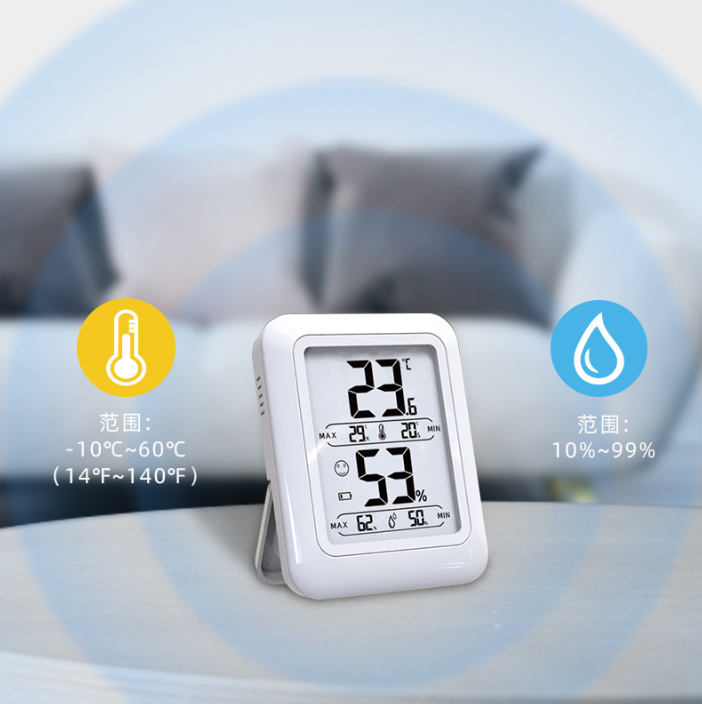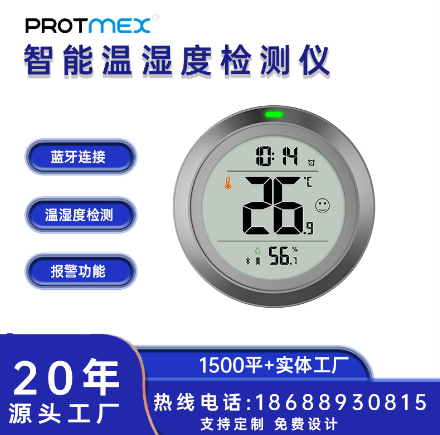PROFESSIONAL EQUIPMENT,
INNOVATIVE TECHNOLOGY
Laboratory temperature and humidity monitoring is very important. According to the standard specified in GB/T4857.2-2005, the temperature of the laboratory should be controlled at about 21°C-25°C, and the relative humidity should be controlled at about 45%-55% to meet the basic experimental requirements. More professional experimental requirements require a constant temperature and humidity environment to maintain the accuracy of the experimental process.
The indoor microclimate, including temperature, humidity, and airflow velocity, all have an impact on the people and equipment working in the laboratory.
Indoor environment
From the perspective of the indoor environment of the laboratory, the situation that can lead to sharp temperature difference and excessive humidity is almost non-existent, so the short-term control degree of the temperature and humidity regulator is very demanding, and it is strictly controlled from the methods of cooling, heating, humidification and dehumidification.
From the perspective of the external environment, the temperature and humidity changes in the laboratory will be affected by the external conditions, such as the change of seasons, regional differences, the temperature difference between day and night, and the influence of various special weather, resulting in high and low changes in temperature and humidity. For example, the suitable temperature in summer should be 18~28°C, 16~20°C in winter, and the humidity should be between 30% (winter) ~ 70% (summer).
National standards for temperature and humidity in some laboratories
Reagent room: temperature 10~30°C, humidity 35~80%.
Sample storage room: temperature 10~30°C, humidity 35~80%.
Balance room: temperature 10~30°C, humidity 35~80%.
Moisture chamber: temperature 10~30°C, humidity 35~65%.
Infrared chamber: temperature 10~30°C, humidity 35~60%.
Central laboratory: temperature 10~30°C, humidity 35~80%.
Sample retention chamber: temperature 10~25°C, humidity 35~70%.
Microbiology laboratory: general temperature: 18-26 degrees, humidity: 45%-65%.
Animal laboratory: humidity should be maintained between 40%~60%RH.
Chemistry labs: Temperatures should generally be controlled between 20°C and 25°C, and humidity should be controlled between 40% and 60%.
Materials laboratory: The temperature should be controlled between 20°C and 25°C, and the humidity should be controlled between 40% and 60%.
In order to ensure the balance of temperature and humidity and meet the experimental standards, the laboratory needs to seal and isolate the external environment from any emergencies that may lead to changes in the indoor air, strictly require the management personnel to regularly change the timing of fresh air, prohibit the pollution of the indoor environment by the negligence of personnel, and measure the temperature of the use environment of lighting equipment and precision instruments to ensure that the indoor temperature and humidity reach the specified deviation.

In particular, the relative humidity change of the laboratory is strictly controlled, because there are no other conditions in the air in the laboratory that cause the difference in temperature and humidity, and as long as the temperature of the air changes by 1.0 °C, it will lead to a large change in relative humidity and affect the normal operation of indoor instruments. Even a temperature difference of just 0.2°C can cause a humidity change of more than 0.5%.
Therefore, laboratories that are very sensitive to temperature and humidity need to use professional sensors to strictly control deviations, especially for accurate monitoring of humidity.
There are two kinds of sensors, one is the temperature sensor, which is relatively accurate; The other is the humidity sensor, which will be inaccurate under certain conditions, and the humidity of the air must be monitored regularly to ensure accuracy. At the same time, it is important to pay attention to the uniformity of the entire temperature and humidity control area when constructing the laboratory.
Overall, the temperature and humidity control needs of a laboratory vary depending on the type of experiment and the goal.
The following detectors are highly recommended:



